New Zealand has 15,134kms (9.398 miles) of coastline making it the 9th on the list of countries with the most coastline. The long, rocky, often foggy shores, with changeable weather turning the seas from calm into foaming anger within a few minutes, have resulted in 2,300 ships being wrecked since the 1700s when ships began arriving for whaling then exploration and then with settlers to establish European occupation.
There have been many dramatic ship losses recorded in New Zealand’s history books with sad losses of life. Even with modern technology, ships still come to grief. Four recent wrecks have become attractions for divers from around the world with each having a unique story to tell:
MS MIKHAIL LERMONTOV
This popular cruise ship was named after Mikhail Yurievich Lermontov, the Russian novelist and poet who died during a duel at the age of 27. Perhaps the poet’s unfortunate end was an ill omen for the ship itself. The Mikhail Lermontov was designed as an Atlantic liner to sail between Leningrad (St. Petersburg) and New York but when President Regan banned Soviet ships from American ports, the ship’s owners were forced to find other ways to utilize their vessel. The Baltic Steamship Company spent $US15 million on a major refit to convert their serviceable liner into a luxury cruise ship.
 Mikhail Lermontov (nzmaritime.co.nz)
Mikhail Lermontov (nzmaritime.co.nz)
On 16 February 1986, while on a cruise around New Zealand, a local pilot swung the 20,000 tonne Mikhail Lermontov into the narrow channel between Cape Jackson and a lighthouse in the Marlborough Sounds at the top of the South Island. The hull of the 170 metre long ship was ripped open by rocks and within 5 hours, the Mikhail Lermontov had sunk. All but one of the 740 people on board the 14 year old vessel were rescued. Mystery still surrounds the incident which is now one of the largest and most accessible diving wrecks of the modern era.
Today the $45 million cruise liner lies on its side totally intact in 36 metres of water, resting on a 10 degree slope. The Port bridge wing is only about 12 metres below the surface. Bottom visibility varies greatly from 15 to 60 feet, depending mainly on the amount of recent rainfall in the area. The wreck is massive and still fully intact. The restaurant still has tables bolted to the floor. Chandeliers still hang in the lounge. On a recent dive, a cupboard in the kitchen was discovered full with china and silverware.
 Diving inside the Mikhail Lermontov (Photo:Kevin Davidson)
Diving inside the Mikhail Lermontov (Photo:Kevin Davidson)
Divers can easily access the ship’s open public areas from the port side windows near the top of the wreck. However, care must be taken while swimming in enclosed areas such as restaurants, crew messes, and shopping arcades. Three divers are known to have died while exploring the ship, including one diver whose body is still possibly trapped inside.
The over-riding impression left on those who have dived this wreck is one of colossal size.
Take a dive on the wreck of the Mikhail Lermontov here:
https://www.youtube.com/watch?v=_lMH7SDh67c
HMNZS WAIKATO
Launched in Belfast on February 18 1966, and commissioned into the Royal New Zealand Navy on September 5 that year, the HMNZS Waikato was the first of the Leander class frigates built for the navy. The vessel had a top speed of 30 knots, and was heavily armed with twin 4.5in guns in the turret, two 20mm machine guns on the wings, a quad Seacat anti-aircraft missile launcher, six anti-submarine torpedo tubes and a Wasp Helicopter capable of delivering depth charges. It was the first New Zealand warship with a helicopter pad. The warship’s international duties included patrols in the Persian Gulf .
By the 1990s, the cost of new technologies for the Leander ships grew beyond the navy’s budget and it was a case of looking for cheaper ships so the HMNZS Waikato was decommissioned in 1998. It was decided the bulk of the unwanted ship would make a good artificial reef. Over the following two years, the vessel was stripped of all its equipment to become a safe and easily accessible site for divers and was sent to her final resting place on the 25th of November 2000. Taking just 2 minutes and 40 seconds, the highly publicised sinking was a world record.
The ship now rests 30metres under the surface and is the only purpose-sunk frigate in the Southern Hemisphere. Her turret and one propeller were left on the ship. She has large holes cut in the side to make entry and exit very safe so less experienced divers can gain valuable wreck diving experience from the vessel. The shallowest part of the wreck is only 8 metres from the surface. During a heavy storm in 2000, the bow broke away from the rest of the ship but this only adds to the interest of this popular diving attraction.
Take a short swim around the wreck of the HMNZS Waikato:
https://www.youtube.com/watch?v=FPdH40w5Er4
If you want to see the frigate sinking, check out the sad sight here:
https://www.youtube.com/watch?v=6LIBbb-M9jU
A short distance from the wreck of the frigate lies the wreck of another naval vessel. The HMNZS Tui was a hydrographic research ship that became surplus to requirements and was sunk in February 1999. Both the Tui and Waikato have become popular dive sites and have also encouraged new marine life to add to the richness of the waters along the Tutukaka coast.
RAINBOW WARRIOR
The Rainbow Warrior is one of the world’s most famous diving sites.
“When man has destroyed the world through his greed, the Warriors of the Rainbow will arise to save it again“.
Bombed in Auckland Harbour by French Secret Service agents, the Greenpeace flagship, Rainbow Warrior was patched up and towed to Matauri Bay in the upper North Island and scuttled there two years later. Lying at a depth of 26m, the artificial reef created by the wreck has matured into a rainbow of colour with jewel coloured anemones clinging to the rails in brilliant shades of purple, yellow and blue. The wreck is also home to schools of Golden Snapper, Kingfish and John Dory.
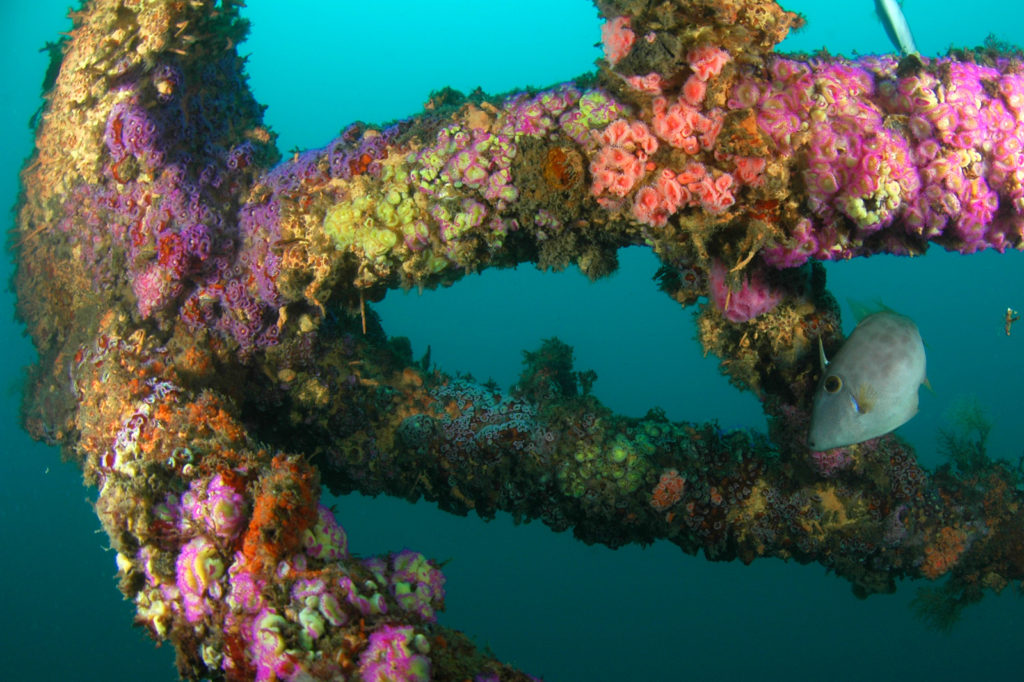 Colourful Wreck of Rainbow Warrior
Colourful Wreck of Rainbow Warrior
 Rainbow Warrior (wikimedia.com)
Rainbow Warrior (wikimedia.com)
During French nuclear testing in the Tuamotu Archipelago, French Polynesia. Greenpeace wanted to observe the effects of the testing by illegally stationing protesters on the island to monitor the blast. However the French Government found out about these plans and on the night of 10 July 1985 while the ship was docked at an Auckland wharf, two high explosive devices attached to the hull of the Rainbow Warrior detonated within the space of a few minutes. The explosions blew an 8 foot hole below the waterline at the engine room. The vessel sank within minutes with the loss of a crew member.
The Rainbow Warrior was re-floated on 21 August 1985 and transported to Devonport Naval base in Auckland where a close analysis resulted in the reluctant decision by Greenpeace to scuttle their beloved vessel, the damage being too expensive to repair.
However, the legacy of the once famous little vessel lives on under the peaceful waters of Matauri Bay, Northland. New Zealand.
Dive the Rainbow Warrior here:
https://www.youtube.com/watch?v=pAiT9rLT0to
MV RENA
On the 5th October 2011, the 37, 320 tonne container ship, MV Rena slammed into Astrolabe Reef in the Bay of Plenty. Containers fell into the sea and were washed up on nearby beaches. Twelve weeks later, in January 2012, the large ship broke in half in the heavy seas that constantly pound the reef and it became the largest ship to ever be wrecked on the New Zealand coastline. The 5 km long oil spill became the worst environmental disaster in New Zealand’s history. Local Maori watched carefully as the half billion dollar clean up took place. Along with mopping up the oil, more than 850 tonnes of debris was removed from the area and it became the second most expensive clean up in history.
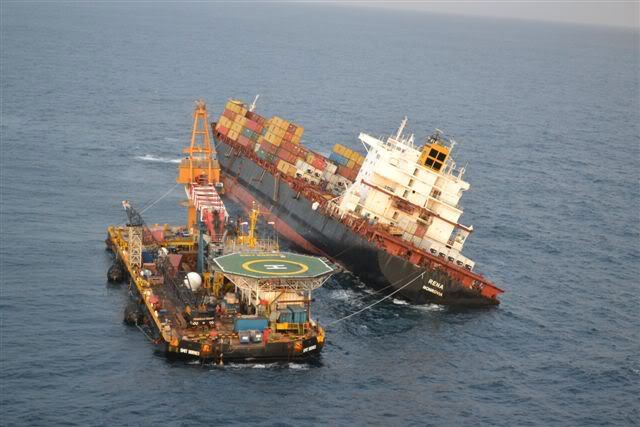 Before the ship sank, the 350 tonne accommodation block was removed along with 77% of the containers. What remained of the ship finally disappeared beneath the waves in April 2012 and now lies in 56 metres of dangerous waters. Strong currents swirl around the reef and on any day, as many as 20 pleasure and fishing boats navigate around the reef. This is a dive only experienced divers should attempt and locals fear there will be deaths if recreational divers attempt to swim to the wreck.
Before the ship sank, the 350 tonne accommodation block was removed along with 77% of the containers. What remained of the ship finally disappeared beneath the waves in April 2012 and now lies in 56 metres of dangerous waters. Strong currents swirl around the reef and on any day, as many as 20 pleasure and fishing boats navigate around the reef. This is a dive only experienced divers should attempt and locals fear there will be deaths if recreational divers attempt to swim to the wreck.
This is a great video of a Rena dive:
https://www.youtube.com/watch?v=0OEiQv_yo70
Ceidrik Heward is an Amazon TOP SELLING AUTHOR and has lived and worked in 7 countries working as a TV cameraman, director and film tutor. For the past 17 years he has focused on writing and has been published in magazines and newspapers in Europe, USA, Asia and the Middle East.
His interests include photography, psychology and metaphysics. He loves to read and always has at least 3 books on the go. He has written 22 manuals/books and has just completed his 4th short novel. Ceidrik believes sharing information and stories is the best way to stimulate the imagination and enrich our lives.
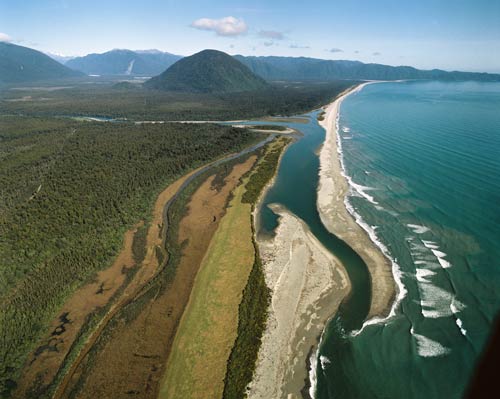
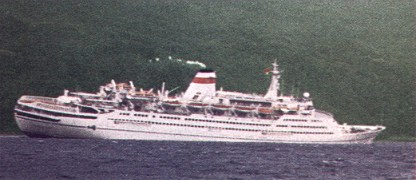
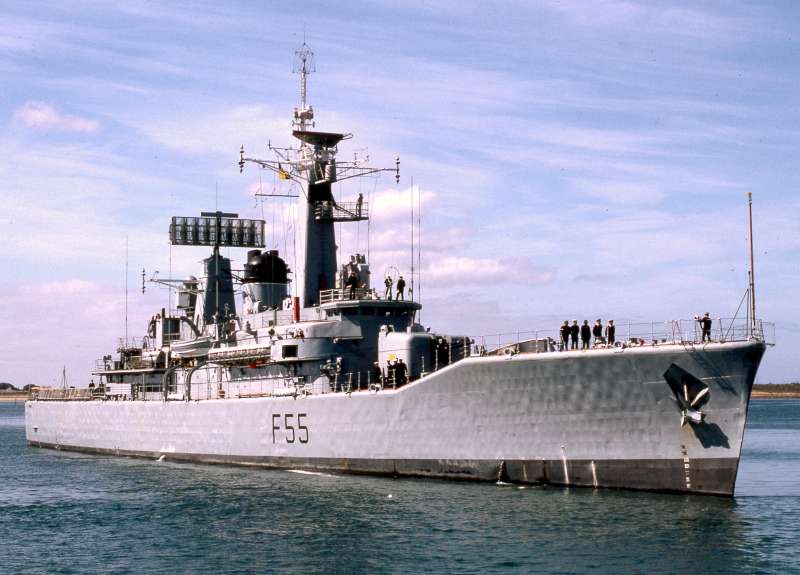


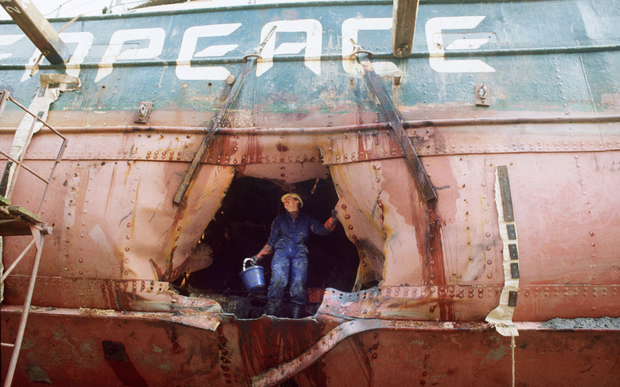
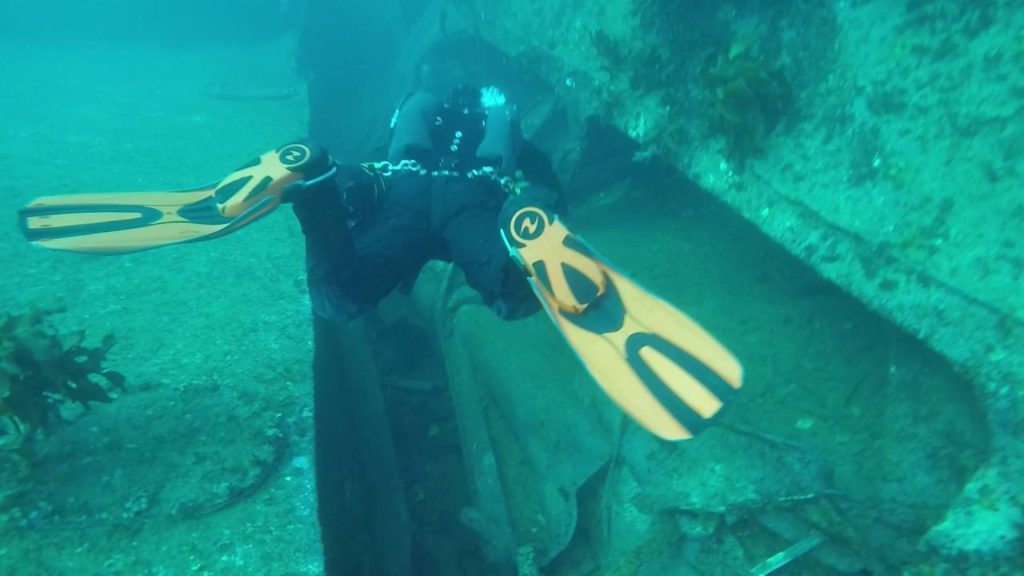


















 Visit Today : 144
Visit Today : 144 Total Visit : 1133321
Total Visit : 1133321
Speak Your Mind